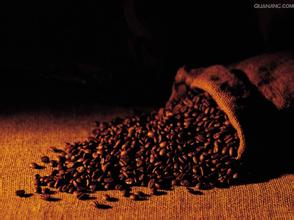Introduction to the processing process of coffee bean picking method
Introduction to the processing process of coffee bean picking method
1. Skin/Pulp: the outermost layer of coffee beans is covered with berry-like skin and pulp. In addition to the natural sun method, coffee beans treated by other methods must remove the skin and flesh within a few hours after picking. For coffee, peel and pulp are important by-products. In some places, people use the peel and pulp of coffee to make tea. People in the industry are accustomed to calling the skin and pulp of coffee "Pulp", while the machine used to remove the pulp is called "desizing machine".
two。 Mucous membrane (Mucilage): under the skin and pulp, a thick layer of mucus tightly wraps the coffee beans. Because this mucous membrane is extremely sticky and high in sugar, it is used to call it "Honey". Not only coffee, but also many fruits have a layer of mucus inside.
Coffee trees generally blossom in 3-4 years, about 2-3 months a year. The appearance and smell of coffee trees are similar to those of jasmine flowers. After the flowers bloom, they bear small green fruits, and after a few months they mature and turn red into pickable ripe fruits. The skin of the mature fruit is red. Because the shape and color are similar to cherries, mature coffee fruits are called coffee cherries (coffe cherry) in many places. Under the bright red pericarp, the pericarp, pulp and a sweet sticky yellow substance wrap the coffee, but not all the land located in this area can produce good coffee trees. The ideal planting conditions for coffee trees are: a warm climate with a temperature of 15-25 ℃, and a rainfall of 1500-2000 mm throughout the year, and the rainfall time should be consistent with the flowering cycle of the coffee tree. Of course, in addition to the coordination of seasons and rainfall, there should be fertile soil. The most suitable soil for growing coffee is a well-drained, fertile soil containing volcanic ash.
(1) hand picking
With the exception of Brazil and Ethiopia, most Arabica coffee-producing countries are harvested by hand. Hand picking not only removes ripe bright red coffee, but also sometimes along with immature cyan beans and branches, so these immature beans are often mixed with refined coffee beans, especially when they are refined by natural drying. If these beans are mixed with baking, they will produce a disgusting stench.
(2) shake-down method
This method is to hit the ripe fruit or shake the coffee branch with a random stick, so that the fruit falls and accumulates into a pile. Larger estates use large harvesters, while small and medium-sized farms harvest with a sea of people mobilized by the whole family. This method of shaking the fruit off the ground is easier to mix with impurities and defective beans than the hand-picking method, and beans from some places can be stained with a strange smell or fermented because the ground is wet. Producers of Robusta coffee beans such as Brazil and Ethiopia are mostly harvested in this way.
Countries harvested by shaking and falling method also adopt natural drying method to refine coffee beans. Coffee blossoms in spring, bears fruit in summer and harvests in winter, so it is very difficult to harvest and dry in places where there is no clear distinction between drought and rainy seasons. in the rainy season, it is impossible to use natural drying. Therefore, coffee is suitable for growing in areas with early and rainy seasons.

Important Notice :
前街咖啡 FrontStreet Coffee has moved to new addredd:
FrontStreet Coffee Address: 315,Donghua East Road,GuangZhou
Tel:020 38364473
- Prev

Coffee bean processing method-wet plucking method
Coffee fruit consists of exocarp, pulp with mucus (mesocarp) and coffee beans (endosperm). When the coffee fruit is ripe, the exocarp of the coffee turns red or yellow. Usually, a coffee fruit contains two coffee beans, each wrapped in a brown film similar to the color of parchment and a white film. In every step of processing coffee,
- Next

Flavor characteristics of coffee beans from three continents
The flavor characteristics of coffee beans on three continents The origin of coffee cultivation in Latin America was introduced in 1721 when Gabriel Mathieu de Clieu, a French naval officer, took the first coffee sapling from Africa to Martinique in Latin America. Because France was under the Bourbon dynasty.
Related
- Guji coffee producing area of Guji, Ethiopia: Humbela, Shakiso, Wulaga
- What is the most expensive variety of Qiloso in BOP multi-variety group?
- How to store the coffee beans bought home?
- Why are Yemeni coffee beans so rare now?
- Ethiopian Sidamo all Red Fruit Sun Sun Santa Vini Coffee beans
- SOE is mostly sour? What does it mean? Is it a single bean? what's the difference between it and Italian blending?
- Is Italian coffee beans suitable for making hand-brewed coffee?
- How to choose coffee beans when making cold coffee? What kind of coffee beans are suitable for making cold coffee?
- Just entered the pit to make coffee, what kind of coffee beans should be chosen?
- Can only Japan buy real Blue Mountain Coffee? What are authentic Jamaican Blue Mountain coffee beans?

